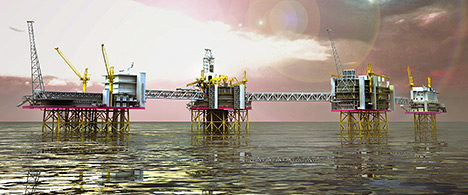 The gigantic Johan Sverdrup field, one of the most profitable industrial projects in Norway over coming decades, will provide enormous value.
The gigantic Johan Sverdrup field, one of the most profitable industrial projects in Norway over coming decades, will provide enormous value.
Construction of the first phase may lead to 51,000 man-years related to Norwegian deliveries, and the field may produce revenues amounting to NOK 1350 billion. The project will provide new knowledge, new solutions and new opportunities.
"Johan Sverdrup represents all we stand for as an industry and our faith in the future. This will be a gigantic project that will secure energy supply and jobs and result in substantial spin-offs and value for Norwegian society, the industry and the partnership behind the development," says Nylund.
Johan Sverdrup is one of the biggest discoveries on the Norwegian continental shelf since the mid-1980s and ranks among the biggest developments in the years ahead.
The consultation period concerning the environmental impact assessment for the field and the power proposal will now commence.
Large Norwegian component
It is estimated that the first-phase development of the Johan Sverdrup field will create around 51,000 man-years nationally, of which as many as 22,000 are expected to be performed by suppliers in Norway and approx. 12,000 by their subcontractors.
Calculations show that 2,700 man-years will be created in an average year in the production phase, with 3,400 man-years expected to be created at peak field development.
Based on estimates from Agenda Kaupang it is possible for the Norwegian supplier industry to be awarded more than 50% of the assignments in the construction phase and around 90% in the operating phase.
"It is very important for the Johan Sverdrup development that the Norwegian supplier industry positions itself well for the opportunities lying ahead," says Nylund.
A new chapter
According to a provisional estimate, total production revenues over 50 years may amount to as much as NOK 1350 billion (1). Of this amount, corporation tax alone will give the Norwegian state NOK 670 billion in direct revenue. Total investments for the first development phase are NOK 100-120 billion (2), while production will be in the range of 315,000-380,000 barrels per day.
Looked at from the perspective of 50 years, Johan Sverdrup will be a long-term project that several generations will bring to maturity and operate. The 200 sq.km. large field will be developed in stages. The partners are currently working on various development scenarios for the various phases in order to ensure that the first construction phase forms the basis for an overall, integrated development.
"We are planning for a stepwise field development with various installations tied back to a joint field center. This will ensure continuity and comprehensive resource utilization and also generate the greatest possible added value for our owners," adds Nylund.
Depending on the future choice of capacities and technical solutions, an early estimate for full development indicates NOK 170-220 billion with daily production put at 550,000-650,000 barrels per day.
Johan Sverdrup is situated in mature acreage that has been thoroughly studied and where the most central environmental aspects are that the development receives its power from land; that produced water will be purified and re-injected into the reservoir; and that cuttings drilled with oil-based liquid will either be brought ashore, or purified and discharged offshore. This is in accordance with regulations and a permit will be applied for.
The environmental impact assessment forms part of the plan for development and operation that is expected to be handled by the Storting next year and expected to be prepared and agreed by the partners in the beginning of February 2015.
1) 2014
2) 2013
Environmental impact assessment
An important milestone for the first planning phase of the comprehensive field development has been reached: The environmental impact assessments of: the field; the power solution; and the export solutions, are ready for consultation.
This is the first part of the plan for development and operation (PDO), the plan for installation and operation (PIO) of the power transmission facilities and the plan for installation and operation (PIO) for the export solutions respectively.
They will be submitted to the Ministry of Petroleum and Energy (MPE) in the beginning of 2015 to be discussed by the Norwegian parliament (the Storting). An investment decision will also be made at that time.
Partners
Production license 501: Lundin Norway (operator - 40%), Statoil (40%), Maersk Oil (20%)
Production license 265: Statoil (operator - 40%), Petoro (30%), Det norske oljeselskap (20%), Lundin Norway (10%)
Production license 502: Statoil (operator - 44,44%), Petoro (33,33%), Det norske oljeselskap (22,22%)


 The Seaway line reversal in May of 2014 marked a turning point in the North American crude oil market with the draining of record stocks at the Cushing, Oklahoma storage hub. Attention has now shifted to the U.S. Gulf Coast and its capacity to move, store, refine, and export the glut of U.S. crude oil.
The Seaway line reversal in May of 2014 marked a turning point in the North American crude oil market with the draining of record stocks at the Cushing, Oklahoma storage hub. Attention has now shifted to the U.S. Gulf Coast and its capacity to move, store, refine, and export the glut of U.S. crude oil. Hercules Offshore, Inc.
Hercules Offshore, Inc. 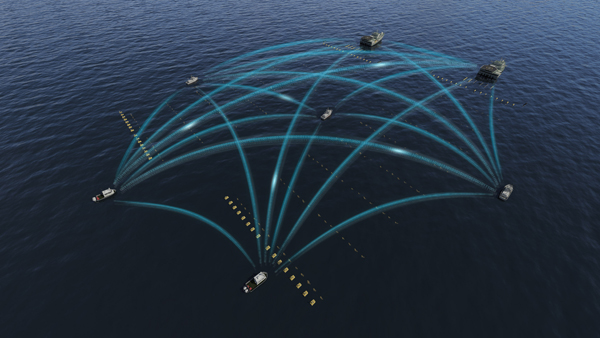 A cutting-edge communication solution developed by
A cutting-edge communication solution developed by 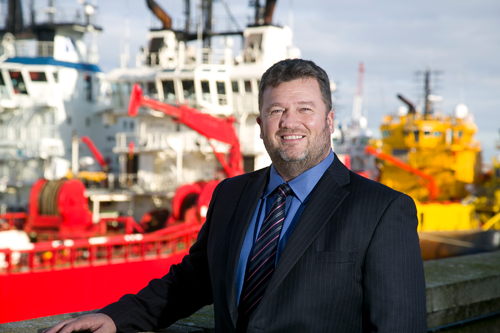 N-Sea Offshore Ltd
N-Sea Offshore Ltd NYC-based
NYC-based  SpeedCast International Limited
SpeedCast International Limited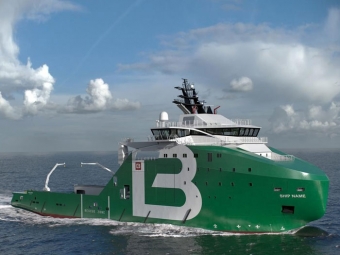 The name of this new BOURBON vessel says it all: scheduled for delivery in early 2016 from the Vard shipyard.
The name of this new BOURBON vessel says it all: scheduled for delivery in early 2016 from the Vard shipyard. While the specific terms of Mexico's new contractual frameworks for its oil and gas industry are yet to be announced, the regime appears an attractive one and should be conducive to active bidding, according to an analyst with research and consulting firm,
While the specific terms of Mexico's new contractual frameworks for its oil and gas industry are yet to be announced, the regime appears an attractive one and should be conducive to active bidding, according to an analyst with research and consulting firm, 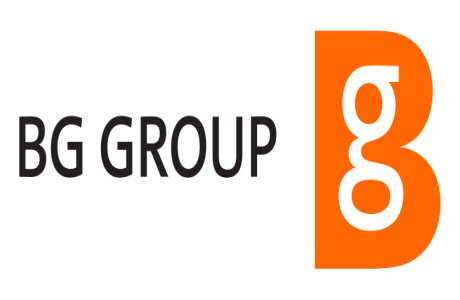
 Exploring deep and ultra-deepwater areas could boost Trinidad and Tobago's (T&T) oil and gas industry, which has $6.2 billion of investment planned over the next two years, helping to offset the government's apparent move away from an energy-dependent economy, says an analyst with research and consulting firm
Exploring deep and ultra-deepwater areas could boost Trinidad and Tobago's (T&T) oil and gas industry, which has $6.2 billion of investment planned over the next two years, helping to offset the government's apparent move away from an energy-dependent economy, says an analyst with research and consulting firm  The Middle East will be one of the key markets for oilfield services companies for decades to come as countries across the region seek to maximize recovery from maturing assets and bring new fields into production, according to leading energy specialist corporate advisory firm
The Middle East will be one of the key markets for oilfield services companies for decades to come as countries across the region seek to maximize recovery from maturing assets and bring new fields into production, according to leading energy specialist corporate advisory firm  The gigantic
The gigantic 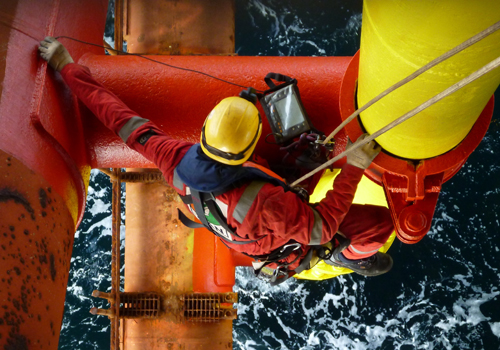 Image: CAN Group’s latest contract win will see them providing ultrasonic inspections as part of structural survey work.
Image: CAN Group’s latest contract win will see them providing ultrasonic inspections as part of structural survey work. We all need to remember, but often choose to forget, that oil is a highly cyclical sector. There have been seven significant price cycles since 1970 and also a few minor ones between times, so yet another should come as no surprise. The reasons for the fall in Brent crude prices from $115.19 in June to below $85 last week are well documented, as is the realization that OPEC is now defending market share, rather than a minimum price. That said, the nature of the oil business is very different now compared to after the 2008 crash.
We all need to remember, but often choose to forget, that oil is a highly cyclical sector. There have been seven significant price cycles since 1970 and also a few minor ones between times, so yet another should come as no surprise. The reasons for the fall in Brent crude prices from $115.19 in June to below $85 last week are well documented, as is the realization that OPEC is now defending market share, rather than a minimum price. That said, the nature of the oil business is very different now compared to after the 2008 crash.